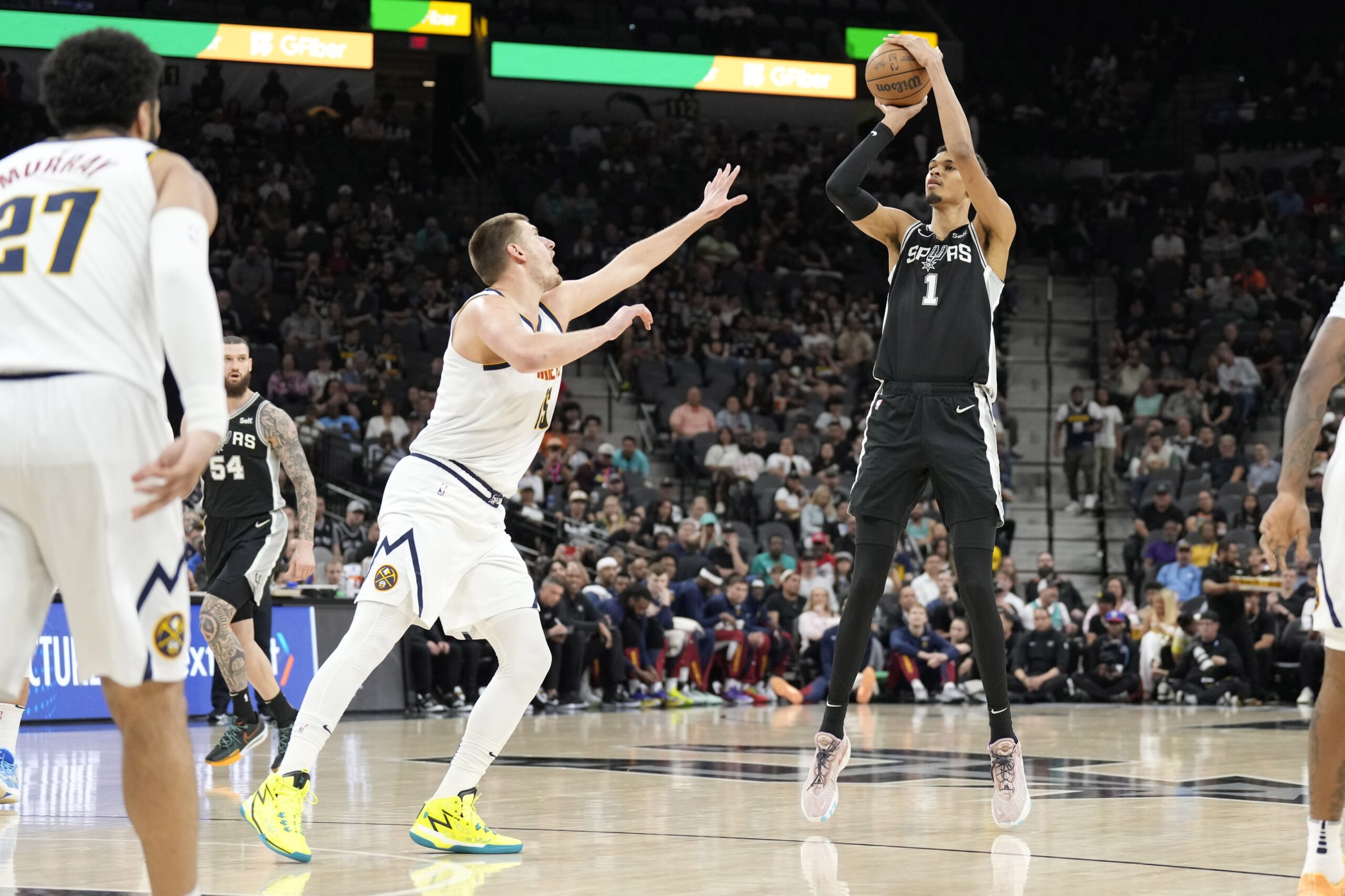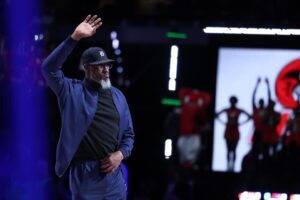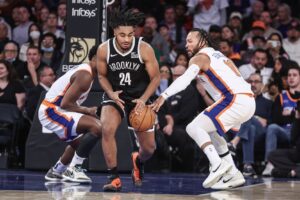The Ringer released their Best of the Next Generation list on Wednesday. Similar in principle to their NBA Ranked’s top 100, which ranks the best players in the league, this offshoot list ranks the best players aged 25 or younger.
The Ringer’s Best of the Next Generation List Splits NBA Fans
For NBA fans, when doing rankings, you will either be wrong or extremely wrong to them. There really is no way a list can please a diverse background of 32+ fanbases (yeah, the 30 NBA franchises and the other two groups that care about the GOAT debate more than anything else). Despite being a thankless job, it’s still a needed exercise. Rankings give us a snapshot of a season in the context of who were the best players.
The Ringer’s Best of the Next Generation list tries to do an ambitious thing. It’s not just trying to rank players by on-court success; it adds layers of nuance. They employed a scoring system where players are ranked according to five categories. They are given a cumulative score based on the individual scores they get in each category.
The five categories mirror how teams evaluate talent for the most part. The first two categories are Current Performance and Future Performance. They are self-descriptive categories. The next three categories are more subjective. The third one is Gets the People Going, which refers to the charisma and marketability of the player. Intangibles refers to qualities like leadership and injury history. Lastly, Foundational Qualities ask an all-important question: can you build a franchise (winning) around a player’s game?
The Guys Who Barely Missed the Cut
The league is so full of young talent that some players were bound to not make the Best of the Next Generation list. The Ringer listed the players they considered for this list but couldn’t get high enough scores to get on it.
We have players like Herb Jones, Coby White, Anfernee Simons, Jaden McDaniels, Jonathan Kuminga, Tyler Herro, and NBA champion Michael Porter Jr. missing out narrowly on this list. Herb and McDaniels are on All-Defense teams this year, yet it doesn’t feel wrong for them to not make this list.
It’s noteworthy that players like Immanuel Quickley, RJ Barrett, Jalen Suggs, or even Scoot Henderson didn’t make the list.
The Top 25 Under 25
What do Desmond Bane, Darius Garland, Jabari Smith, Jalen Johnson, and Jalen Green all have in common? They made up 21-25 on this list. Darius Garland, once upon a time, was an All-Star at 22, so seeing him this low shows how far his value has fallen over the last year. Still, because of his status, he will attract plenty of trade attention as the Cavaliers look to retool this off-season. Nobody here will probably be a franchise cornerstone, but they probably can be second or third options on winning teams.
12-20 comprises Lamelo Ball, Jaren Jackson Jr., Franz Wagner, Brandon Miller, Evan Mobley, Trae Young, Cade Cunningham, Scottie Barnes, and Alperen Sengun. Here, we have franchise cornerstones that may actually be faux. Pseudo cornerstones? Not all that glitters is a cornerstone. The jury is out on whether anyone here can actually lead a winning organization. The best answer to that question heading into the 2023-24 season would have been Young. He’s a three-time All-Star and has led the league in total points and assists in the same year. Yet he’s likely to be traded to the Lakers this off-season. Perhaps he could become the face of the purple and gold in the post-LeBron James era. The others on this list either have an inherent flaw in their game, a questionable injury history, or happen to be on a team in a perpetual state of rebuild.
Best of the Next Generation
This is where the debate is hottest. You’ll find most casual fans here debating why their favorite player is the MVP. This elite group of young talent includes Ja Morant, Zion Williamson, Paolo Banchero, Jalen Williams, Chet Holmgren, Tyrese Maxey, Tyrese Haliburton, Luka Doncic, Shai Gilgeous-Alexander, Anthony Edwards, and Victor Wembanyama.
In a crossroads year for the NBA, the old guard of Stephen Curry, Kevin Durant, and LeBron James are being phased out as faces of the league. Some of the young superstars on this list are already MVP and DPOY candidates. There’s a 75% chance we will have a Finals MVP from this list by the time the 2024 playoffs are finished.
As stated earlier, it is a ranking, so some people will definitely be annoyed by this list. Luka Doncic is too low on the list. It’s the 2018 draft all over again. He should be second only to Victor Wembanyama (arguing his position as first is heresy). Anthony Edwards should be third, ahead of Shai Gilgeous-Alexander (sorry, OKC fans).
Paolo Banchero was in a difficult situation with the Magic offensively with clunky spacing. He doesn’t get enough credit for leading his team in points, rebounds, and assists for a season. He should be sixth. Zion Williamson and Ja Morant should be tied for seventh. Even now, five years after their draft, the consensus is not yet out on who is the better player between the two. Still, they are unicorns in their own right and are too low on this list—probably because of their injury history/off-court issues.
Chet Holmgren and Jalen Williams make more sense as eighth and ninth on this list. Tyrese Maxey should round out the top 10.
The Last Word
It’s interesting to see who finished as the highest in each category. Victor Wembanyama finished with a perfect score of 10.0 in the future performance and foundational qualities categories. The only other 10.0 was from Anthony Edwards in the Gets the People Going category. Luka Doncic led the current performance with a 9.7, narrowly beating SGA like their second-round playoff tie. If you guessed that Victor Wembanyama won the intangibles category, you’d be very correct.
The Ringer’s Best of the Next generation list was always going to be met with some criticism however the list panned out. This was a great list by them, and they continue to enhance their reputation as a cerebral voice of reason in a very hot-take-heavy NBA landscape.






